I started out thinking I was going to do an article about Kawauso Pottery(aka Roy Minarai on Facebook), but the interview stands well on its own. So, here it is in its entirety, along with a selection of Roy’s containers.
I think we can expect (even more) wonderful things from Kawauso Pottery in the coming years; with only a short time under his belt, Roy is already producing some of the best and most complex glazes I’ve seen in the West. I own several of them myself, so am one of the few who has had the opportunity to examine them first hand, and they are as excellent in person as they are in photographs. His truly unique glazes will certainly be collectible in time. Head over to his page and give him a like on Facebook with this link: Kawauso Pottery. And keep your eyes peeled: Roy’s containers will be available for sale to the public soon!
JBP:How old are you?
RG: “37”
RG:“Glamorous Lake Worth, Florida.”
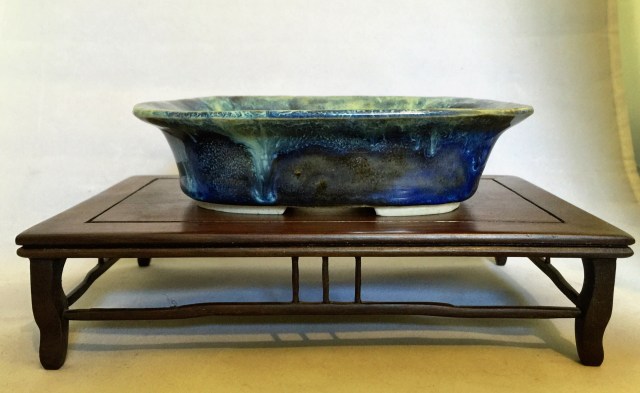
 JBP:Where are you currently located?
JBP:Where are you currently located?
RG:“Greenville, South Carolina.”
RG:“What got me interested to begin with was visiting two places as a kid- the Morikami Museum and Gardens and the Mounts Botanical Garden. There I saw bonsai trees for the very first time and fell in love. I was so intrigued and captivated by those little trees. I could sit and look at them for hours. I recently went back with my wife Patti and explored the Morikami, and it was still amazing!”
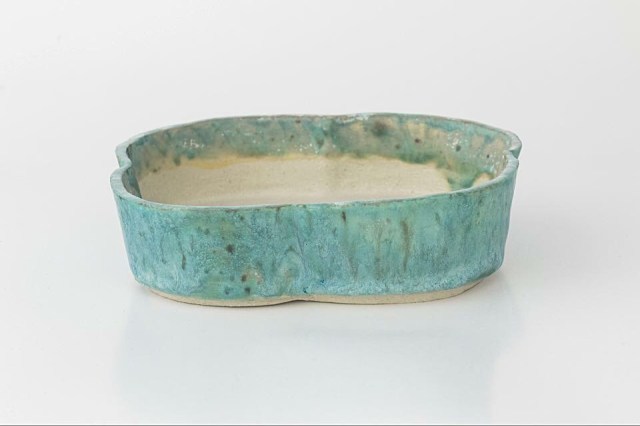 JBP:How long have you been into bonsai?
JBP:How long have you been into bonsai?
RG:“With that said it was many many years before I actually got any bonsai of my own. I had always admired and checked them out whenever I had the opportunity, but it wasn’t until 2013 when my wife encouraged me to get one, that I got my first, a trident. Then I got another, and another and you know how that goes…”
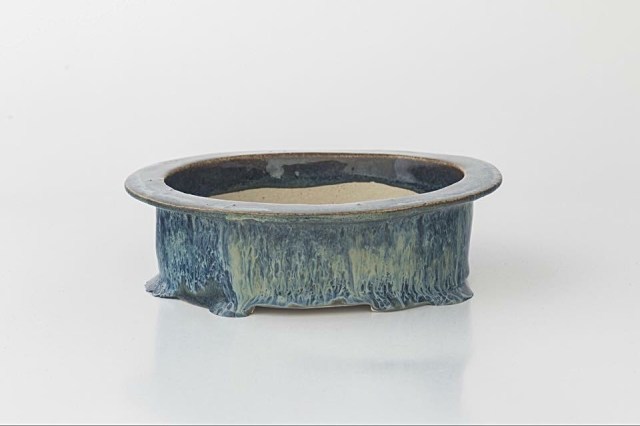 JBP:Are you still doing bonsai, or has pottery taken over?
JBP:Are you still doing bonsai, or has pottery taken over?
RG:” I still have some trees. I can say that I enjoy the pottery aspect of bonsai more than the trees at this point. Maybe it’s the result of pottery consuming my time, or just the natural evolution of things, but I find myself giving away a lot of trees and focusing on a few, mainly maples and crabapples.”
 JBP:How long have you been doing pottery?
JBP:How long have you been doing pottery?
RG:“Ummm. Haha. I feel like answering that question might change the way people look at my pots… A long time. Like 8-10……months.” (Editors Note: it certainly does change the way I look at Roy’s pots: they’re far far more impressive in the light of his rookie status!)
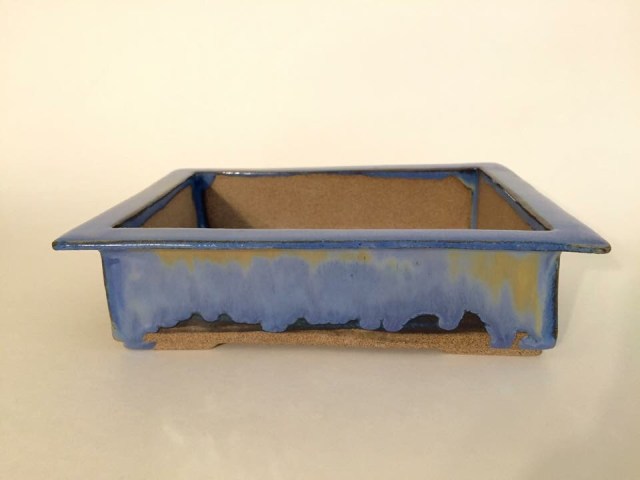 JBP:What got you started in pottery?
JBP:What got you started in pottery?
RG:“I’m not sure. It would be cool if I had this experience that inspired and launched me into it right? But the truth is I remembered enjoying making a coil pot in grade school, and when I saw the amazing things people were doing with bonsai pots, I thought I’d give it a try. I have always thought I wasn’t artistic or creative. I’m good with words but nothing tangible or functional. Until pottery. Something clicked while doing my first pot in a friends garage, and I discovered something I never knew was there”
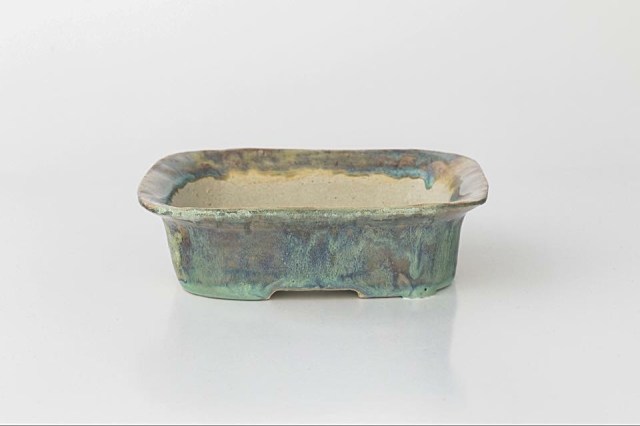 JBP:What bonsai potters or artists have influenced you, Japanese or American?
JBP:What bonsai potters or artists have influenced you, Japanese or American?
RG:“That’s like asking a musician what bands inspire him, it would be cool if I could throw out obscure names that no ones heard of, but I’m not that cool. Bunzan, Bushuan, Eimei, Tom Benda, Andrew Pearson, Jurgen Robyns, Horst, Sonny and Stephanie Walker, to name a few… Also Bjorn Bjorholm- yeah he’s not a potter but the dude is so good at what he does and has so much fun doing it (just watch the YouTube series he does). It’s inspiring to see someone operate at that high of a level consistently, and still have as much fun as he does… and a guy named MRB. People like him that are so stoked -and knowledgable about the pottery side of bonsai really encourage me!”
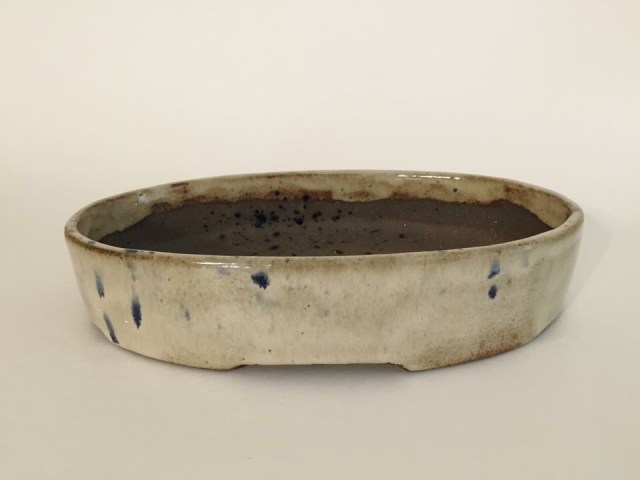 JBP:What are your upcoming plans? Show events? Website sales? Conventions?
JBP:What are your upcoming plans? Show events? Website sales? Conventions?
RG:“Yes. Haha. I don’t know bro, I don’t have anything planned besides to start selling some pots on my Facebook page Kawauso Pottery and maybe a few auction pages… I’d love to do some shows, but without a name I’m not sure who would have me…”(Editors Note: You hear that Show Chairmen? Here’s a vendor you need to invite to the next party!)
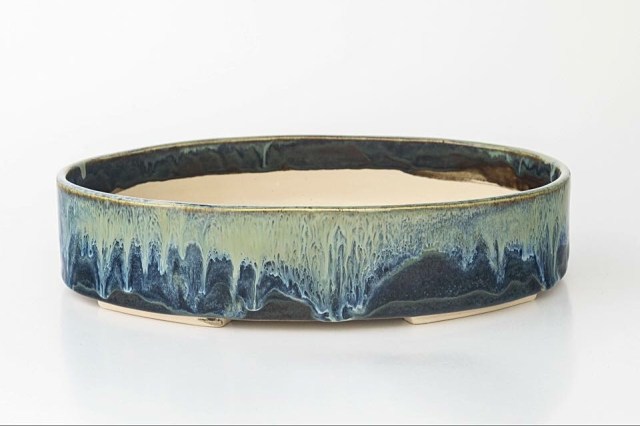 JBP:How are your containers made?
JBP:How are your containers made?
RG:” I make them all by hand, slab building and carving. It’s a slow process with no wheel or molds, but it’s what I enjoy. For me the process of slowing down and being completely present is one of the things I enjoy most. The more I build pots the less tools I find myself using. Lately I use a few pieces of wood and my hands for almost everything.”
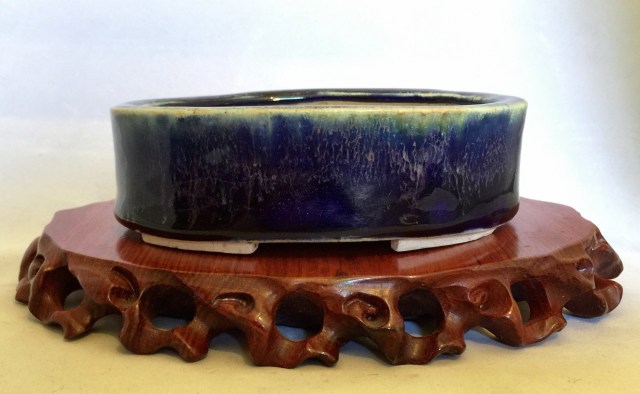 JBP:What styles really intrigue you?
JBP:What styles really intrigue you?
RG:“Right now I’m so new to all this that everything intrigues me. Seriously, I’m like a kid that just discovered Toy R Us for the first time! I find a new favorite pot everyday. Color has become a borderline obsession though. I mean, I like a nice unglazed Yamaaki or Bigei as much as the next guy, but what really intrigues me are glazes that look like they need batteries. That, and runs and drips. I’ve been working a lot on developing consistent drips and runs.”
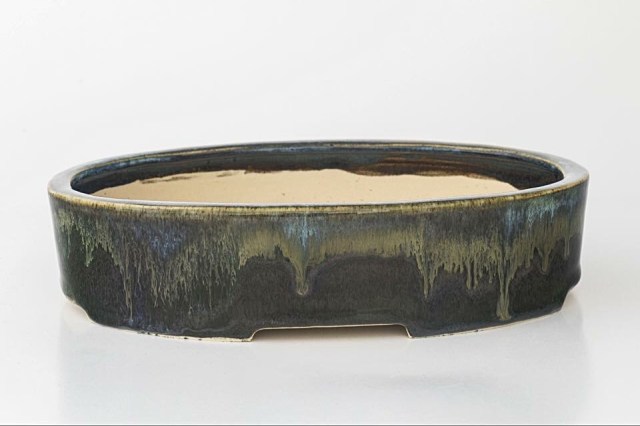 JBP:What styles or features do you not like?
JBP:What styles or features do you not like?
RG:“I’m not a huge fan of rounds. (Ducking as I say it) It’s not that I dislike them really, but they just don’t really catch my eye very often…”
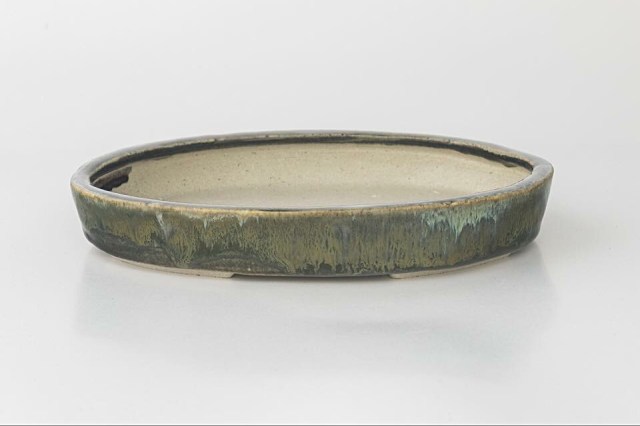 JBP:Where do you envision your production levels?
JBP:Where do you envision your production levels?
RG:” If the past is any predictor of future production- a handful of pots every few weeks. Most of my pots are fired twice for the glaze to look right, so that slows production quite a bit, but I like the results! I don’t have plans of ever producing a lot of pots, I never want to take shortcuts or compromise. Not that you have to produce a lot, but I would have to, because my time is limited.”
 JBP:Where do you see bonsai now, as a movement? Do you think tastes are changing?
JBP:Where do you see bonsai now, as a movement? Do you think tastes are changing?
RG:“I think that we are at the beginning stages of bonsai really exploding in the States which is exciting because of what that will bring about. It is established well in many European countries, and the trees and pottery coming from there are remarkable. I am really excited at the future of bonsai in the U.S. I know we are behind many places. I know that we don’t have the rich tradition of some places, but- we are growing. We are exploring. We are innovating. Some are exploring and embracing species unique to our country, while still others are growing traditional species strictly for bonsai, which will pay huge dividends!”
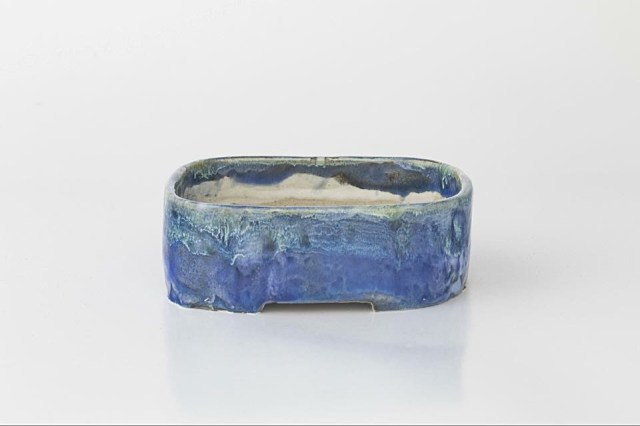 JBP: I very much agree. Do you feel knowledge of pottery is essential to bonsai art? Or is it just the old “frame analogy”: find something that looks good and it’s ok?
JBP: I very much agree. Do you feel knowledge of pottery is essential to bonsai art? Or is it just the old “frame analogy”: find something that looks good and it’s ok?
RG:“I think that you can always just find a pot that looks good, but the greater your knowledge of pottery the easier time you will have. The more you know, the less ‘bro that’s a nice tree but what’s up with that pot?’ comments you’ll probably hear.”
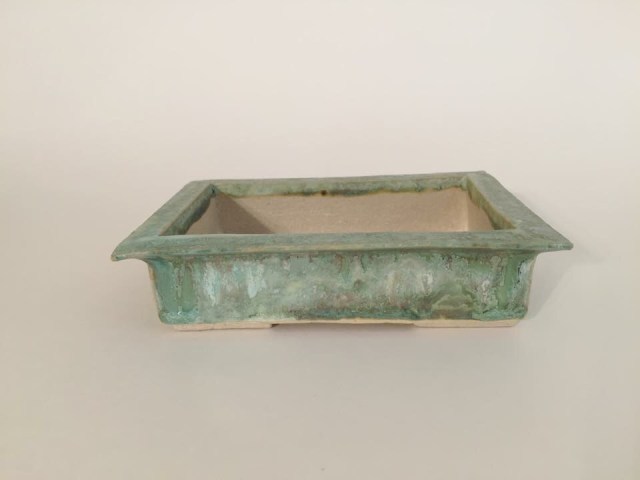 JBP:What considerations do you feel are most important when choosing containers to match bonsai?
JBP:What considerations do you feel are most important when choosing containers to match bonsai?
RG:“Learn the “rules” (unglazed for conifers, masculine/feminine etc…) there are certain guidelines that just make sense and make a good looking display. With that said, I think it has to be something you like. You can get a pot that people say is perfect, but if you don’t like it, it’ll bug you every time you see it on your bench. I’ve done that sorta. I’ve made stepped feet on rectangles and just didn’t like them. Every time I looked at them I hated them, so I cut them off. I know they are “right” in theory, and with time my taste may change- but for me, right now, they’re not.”
 JBP:How about collecting containers? Is there a difference?
JBP:How about collecting containers? Is there a difference?
RG:“I don’t think so. I think that above all a bonsai container is just that- a bonsai container. Some may be so dope that you don’t want to fill them with soil and get them dirty and that’s cool, but they should be capable and functional. I love the idea of people collecting and appreciating pottery on its own, but I hope pots aren’t being made as non-functional collector pieces. Like in the mind of the artist, hopefully the thought process isn’t ‘this thing is useless for bonsai but it looks great.'”
 JBP:Now for the fun existential questions! Bonsai to many people is little more than a hobby, and something they do to relax…but a higher level of bonsai, as art, exists, and it seems to fight with the hobbiest level often. What do you think we can do to change this? Get the community together as a whole?
JBP:Now for the fun existential questions! Bonsai to many people is little more than a hobby, and something they do to relax…but a higher level of bonsai, as art, exists, and it seems to fight with the hobbiest level often. What do you think we can do to change this? Get the community together as a whole?
RG:“I think to an extent the divide will always be there. The amount of time, money, and knowledge people possess will naturally create gaps. Some of those can be overcome with patience and skill, but of the three, knowledge could be the most easily remedied. I think that the more we see people joining clubs, (which means clubs worth joining need to be established where they aren’t) getting good advice on forums and FB pages, and being exposed to proper bonsai, the faster we will close the gap. This means that those with the knowledge have a responsibility to pass it on as much as possible. Give constructive feedback rather than a condescending comment. Point people in the right direction, rather than just point out the direction they are headed is wrong.
When people see good bonsai, and what is possible with patience, proper technique, and good starter material, they are less likely to over pay for that mallsai, with those awesome stones glued to the surface… ”
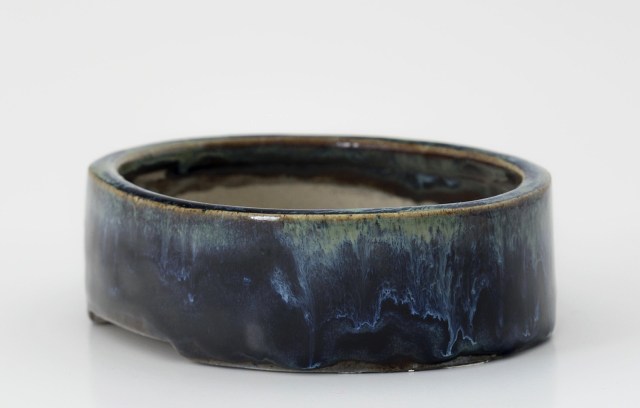 JBP:For the longest time in American Bonsai, trees all seemed to look alike, and were mostly copies of Japanese standards, or by the rules pine styles. This has changed drastically, and with these newer and more complex bonsai that often come from Yamadori, we’re seeing new and complex containers, and glazes like your own, to match. The old rule was to downplay the container, how do you think the complex glazes you’re producing will work with trees?
JBP:For the longest time in American Bonsai, trees all seemed to look alike, and were mostly copies of Japanese standards, or by the rules pine styles. This has changed drastically, and with these newer and more complex bonsai that often come from Yamadori, we’re seeing new and complex containers, and glazes like your own, to match. The old rule was to downplay the container, how do you think the complex glazes you’re producing will work with trees?
RG:“I think my more dynamic glazes will certainly work well with the right trees. I think as there is a greater appreciation of containers and the art of pottery you may see people going away a little bit (just a little, put the pitchforks away, lol) from the idea of downplaying. Obviously no one is going to put a Yamadori Douglas Fir in a pot like most that are pictured, but I think they will work with a lot of deciduous and flowering species. I really think that a naked, heavily ramified gnarly deciduous hornbeam in a dynamic glazed drippy container would look great.”
 JBP:What would you personally like to see change in American Bonsai and container appreciation? Where do you see your art playing a role in our evolution?
JBP:What would you personally like to see change in American Bonsai and container appreciation? Where do you see your art playing a role in our evolution?
RG:“I would love to see the enthusiasm for pottery continue to grow, and specifically to see American bonsai potted in American containers. Like the Artisans Cup or Nationals for example, I would be thrilled if the winning trees were mostly in American containers, but I am betting most won’t be. I know that age and patina play a part in that but I also think that right now, when people think of a show pot, most think Japanese or antique Chinese. I get it- they are stunning, but I also think that there’s some pretty amazing American pottery available. Hopefully the trend will be towards domestic pottery being at least an option. I don’t think we will ever go away from heavily using Eastern pottery, but wouldn’t it be cool if American pottery could be well represented at major shows!?
As far as my part? I’m just a guy that has never had a teacher (besides a few tips via email from guys like Tom, Horst, Andrew, Sonny and Jurgen), never took a class, and who doesn’t know “the rules”. I just make pots that I like. If my wife likes it (she’s my toughest critic and biggest encourager) I’m stoked, if bonsai enthusiasts like them, I’m super humbled. I think those pots that are like woah are worth the ones that fall flat. I don’t mind giving pots to friends that put succulents or herbs in them, if the bonsai community deems them “unfit”.
Maybe in some small way the risks I take will help push the envelope a little and broaden the horizon for other potters now or those coming. Maybe someone that never cared about pots beyond utilitarian use will see something that really stirs them and change the way they think a little… Maybe… Or, maybe one day I’ll toe the line, settle down and start cranking out plain blue pots and stop being so outlandish… But I wouldn’t count on that.”
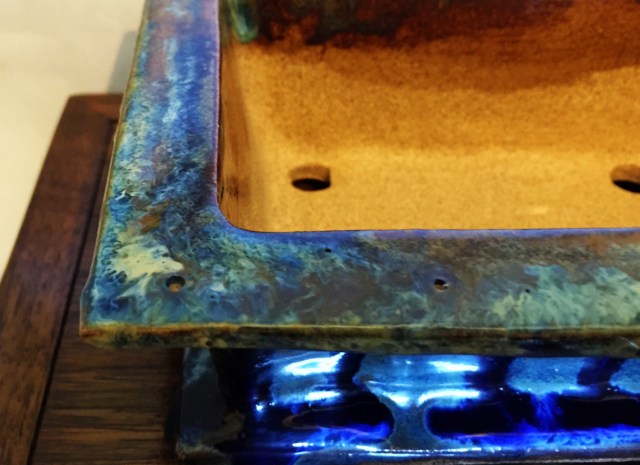
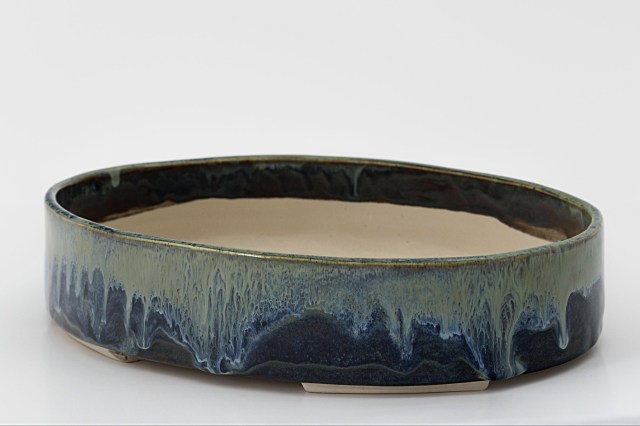
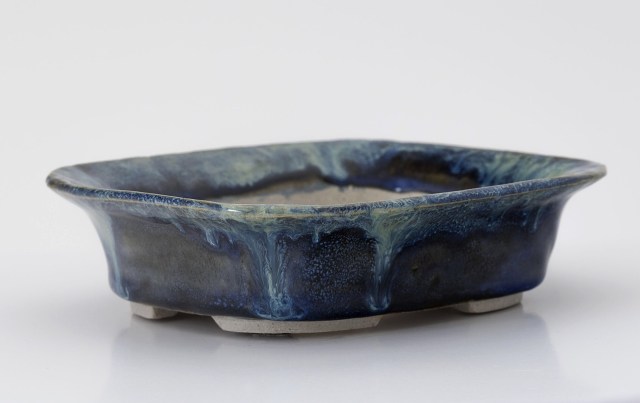
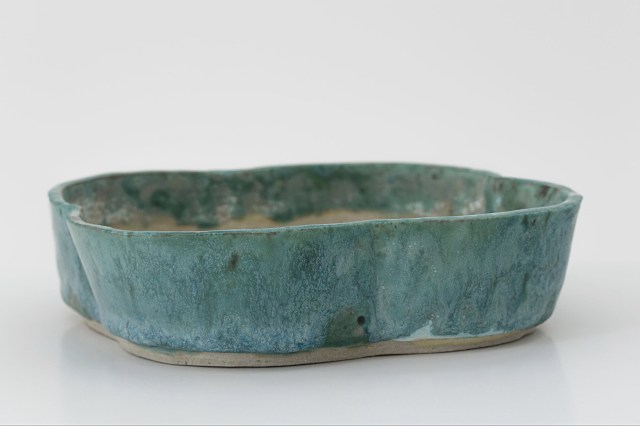 I hope you’ve enjoyed this look at the incredible works being produced at Kawauso pottery. Many thanks to Roy for taking the time to chat.
I hope you’ve enjoyed this look at the incredible works being produced at Kawauso pottery. Many thanks to Roy for taking the time to chat.
Thanks for reading!

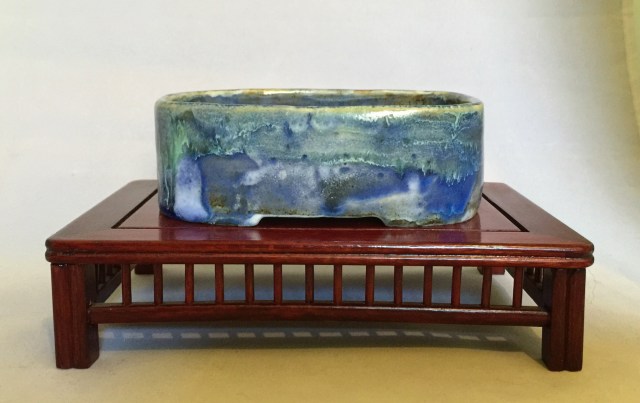

What does he do for a living? Is he a chemist? How did he break into making glazes? What sizes are the pots?
Marianne Thomasson 678-416-9563
From the pictures these look like very high quality pots; not just from the glaze work but also the clay work (pot structure).
Reblogged this on Wolf's Birding and Bonsai Blog.